|
|

|
The Cleveland and Eastern Interurban Historical Society and Museum
P.O. Box 34 - Chardon, Ohio 44024
ceihsmu@gmail.com
|

|
|
The Building of the Cleveland and Eastern Railway
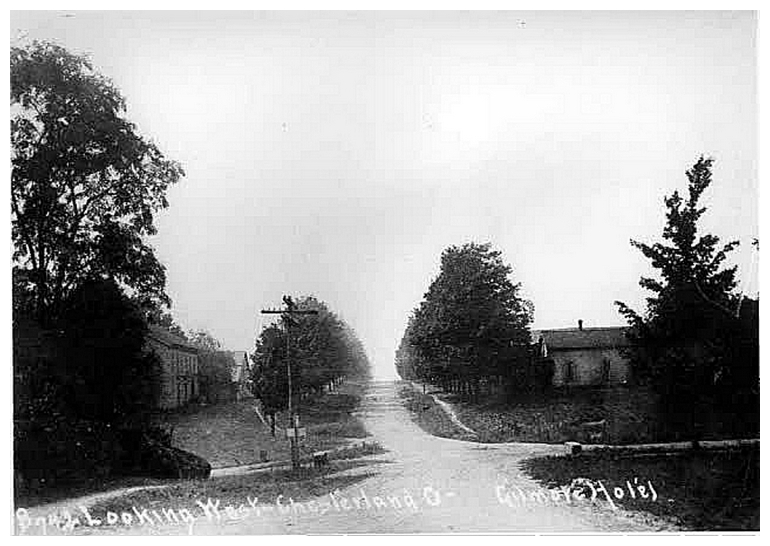
 In the late 1800's the rolling hills of Geauga County were dotted with small farming communities linked by simple dirt roads. Most local travel was done either on foot or by hitching Old Bessie to a wagon or sleigh, which posed many difficulties in periods of inclement weather.
For longer journeys, the only other transportation available was via two steam railroads. The Pittsburgh & Western Railroad, which passed through Middlefield and Chardon on its way from Youngstown to Fairport Harbor in Lake County to the north, and the Wheeling & Lake Erie Railroad which had a branch line to Chagrin Falls to the southwest in Cuyahoga County.
In the late 1800's the rolling hills of Geauga County were dotted with small farming communities linked by simple dirt roads. Most local travel was done either on foot or by hitching Old Bessie to a wagon or sleigh, which posed many difficulties in periods of inclement weather.
For longer journeys, the only other transportation available was via two steam railroads. The Pittsburgh & Western Railroad, which passed through Middlefield and Chardon on its way from Youngstown to Fairport Harbor in Lake County to the north, and the Wheeling & Lake Erie Railroad which had a branch line to Chagrin Falls to the southwest in Cuyahoga County.
|
|
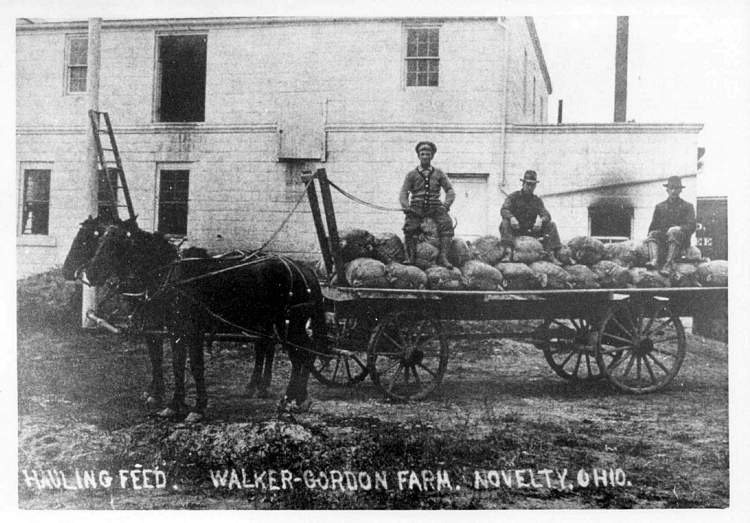
 The county's farmers faced another dilemma. They could take their perishable produce to the steam railroads to be shipped to markets in far away cities, or they could hitch Bessie to the wagon for a trip to the growing city of Cleveland to the west. Although there had been a plank road built along a portion of what is now Mayfield Road, the trip still took nearly a whole day and the tolls on the road were high.
The county's farmers faced another dilemma. They could take their perishable produce to the steam railroads to be shipped to markets in far away cities, or they could hitch Bessie to the wagon for a trip to the growing city of Cleveland to the west. Although there had been a plank road built along a portion of what is now Mayfield Road, the trip still took nearly a whole day and the tolls on the road were high.
The local geography also caused difficulties for travelers. Geauga County, higher in elevation than Cleveland to the west and Lake Erie to the north, is home to the headwaters of the Chagrin, Cuyahoga and Grand Rivers and criss-crossed with picturesque hills and valleys. These valleys, the lower Chagrin in eastern Cuyahoga County in particular, presented a seasonal obstacle to farmers headed for Cleveland.
|
|
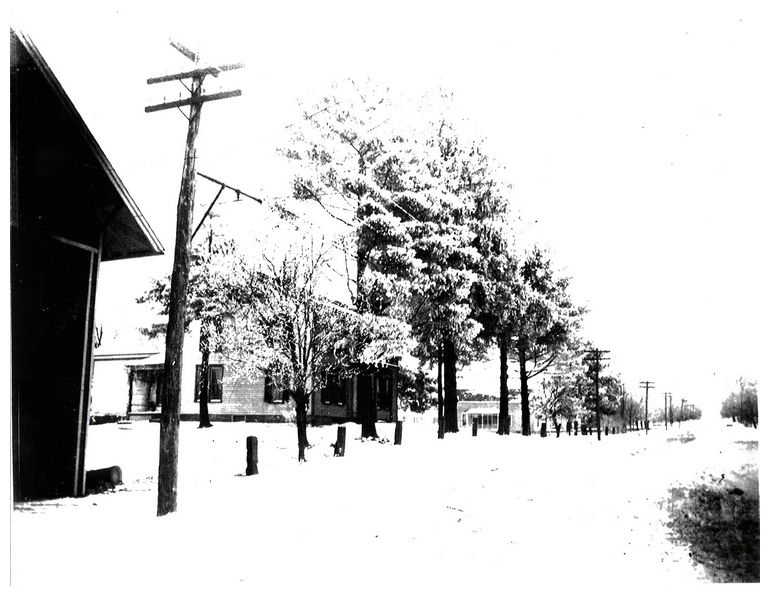
 From late autumn until spring, inclement weather turned the normally dusty roads to impassible muddy ruts that were often frozen and snow covered for most of the winter. Travel in Geauga County, known for its abundant snowfalls, was difficult if not impossible most of the colder months.
From late autumn until spring, inclement weather turned the normally dusty roads to impassible muddy ruts that were often frozen and snow covered for most of the winter. Travel in Geauga County, known for its abundant snowfalls, was difficult if not impossible most of the colder months.
Recent developments in practical methods of generation and transmission of electricity and the accompanying invention of the electric railway car set the stage for a bold venture. Henry A. Everett and Edward W. Moore, two visionary entrepreneurs from Cleveland, set out to build an electric interurban railway to Geauga County.
Their goal was to provide the county's citizens and businessmen with fast and dependable access to the markets and attractions of the nearby big city, as well as allow the city dwellers of Cleveland to experience the natural beauty to be found close at hand to the east. Their plans included connections with the steam railroad to the northeast in the county seat at Chardon and to the southeast in the farming community of Middlefield.
|
|
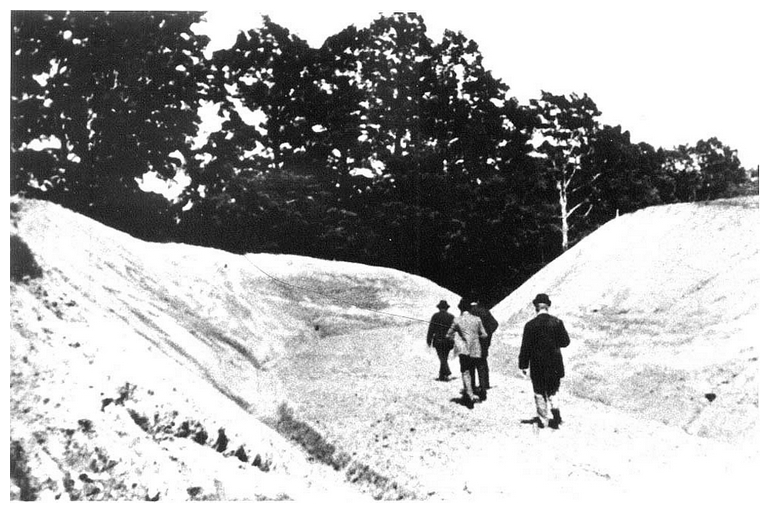
 The pair set out across the county visiting farms, mills and town halls to share their vision. They invited their audiences to participate financially in their venture through the purchase of stock in their newly formed Cleveland and Eastern Railway Company. Drawn by the prospect of economic growth that was sure to come with the electric railway, a group of investors was formed to finance the construction of the line. With enthusiastic public support and a secure source of funding, Everett and Moore put their plans in motion.
The pair set out across the county visiting farms, mills and town halls to share their vision. They invited their audiences to participate financially in their venture through the purchase of stock in their newly formed Cleveland and Eastern Railway Company. Drawn by the prospect of economic growth that was sure to come with the electric railway, a group of investors was formed to finance the construction of the line. With enthusiastic public support and a secure source of funding, Everett and Moore put their plans in motion.
Through a trackage use agreement negotiated with the Cleveland Railway Company, the C & E cars would use a connection with the former's Cleveland Heights suburban line to gain access to the city lines and proceed to the downtown area. The Cleveland line ended at Mayfield and Lee Roads and the C & E built their line east from that point along Mayfield Road (now US Route 322) to the west rim of the Chagrin River valley. The line then descended into the valley, arriving at Gates Mills.
|
|
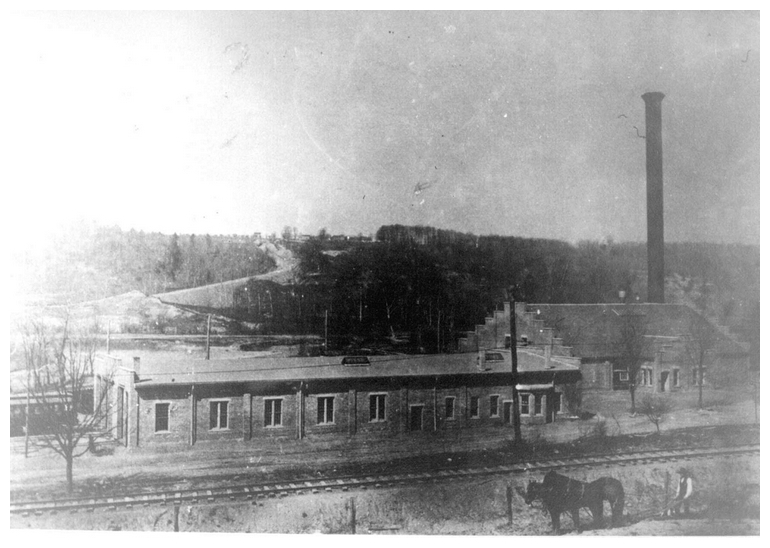
 Everett and Moore had chosen this spot as their center of operations, building barns to both house and repair the equipment and a power house to generate the electricity needed to run the railway. From there the line would climb north and east out of the valley to Scotland and then follow a creek bed southeast to Novelty, where it crossed Chillicothe Road (current day S.R. 306).
Everett and Moore had chosen this spot as their center of operations, building barns to both house and repair the equipment and a power house to generate the electricity needed to run the railway. From there the line would climb north and east out of the valley to Scotland and then follow a creek bed southeast to Novelty, where it crossed Chillicothe Road (current day S.R. 306).
In the 1850's the Painesville & Hudson Railroad Co. had been organized with the purpose of constructing a rail line between the two points to complete a Steam Railroad link between the Ohio River and Lake Erie. Farmers and local businessmen along the proposed route bought shares in the proposition and many had mortgaged their properties for a chance to earn some of the profits that were sure to follow. Surveying and some grading was done south from Painesville to Chardon and then southwest on to Novelty, but economic times were tough for the Steam Railroads and the project was finally abandoned.
|
|
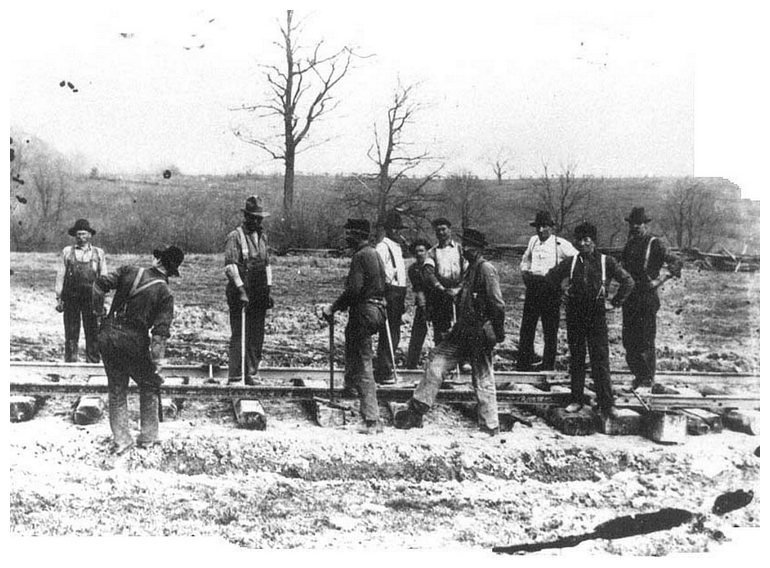
 Everett and Moore took advantage of the investor's misfortune by acquiring the proposed right of way from Novelty to Chardon to complete their route and began laying rail. At about the same time, a crew began building a line from Middlefield west to Burton, where it crossed both branches of the upper Cuyahoga River before reaching Newbury. Here the line turned north, following a fork of the Upper Chagrin River downstream to the point where it joins the main flow on its' way downhill from Chardon. As the line from Novelty to Chardon followed the Chagrin upstream, this remote location was the ideal place for the two lines to meet and would become known as The Junction.
Everett and Moore took advantage of the investor's misfortune by acquiring the proposed right of way from Novelty to Chardon to complete their route and began laying rail. At about the same time, a crew began building a line from Middlefield west to Burton, where it crossed both branches of the upper Cuyahoga River before reaching Newbury. Here the line turned north, following a fork of the Upper Chagrin River downstream to the point where it joins the main flow on its' way downhill from Chardon. As the line from Novelty to Chardon followed the Chagrin upstream, this remote location was the ideal place for the two lines to meet and would become known as The Junction.
|
|
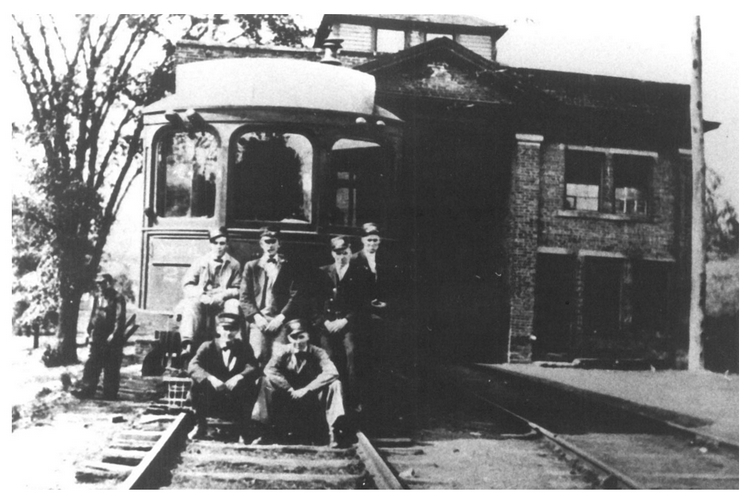
 The line between Chardon and Gates Mills opened for excursion service in June of 1899. At that time the overhead power lines were not yet complete. The line rented a passenger car from the Lakeshore & Michigan Southern Railroad and used one of the two steam engines it had acquired for line construction as motive power.
The line between Chardon and Gates Mills opened for excursion service in June of 1899. At that time the overhead power lines were not yet complete. The line rented a passenger car from the Lakeshore & Michigan Southern Railroad and used one of the two steam engines it had acquired for line construction as motive power.
Regularly scheduled runs began the following October using this equipment. The first set of Interurban Cars from the Jewett Car Company was delivered a short time later. With the completion of the overhead electrical system, service was initiated using the Jewett cars in December of that year. To learn more about these cars and the line's other equipment visit our C & E Roster Photo Gallery.
|
Thanks to Society members Frank Russell, Jim Rivers, Jim Selfe and James Spangler for sharing these photos from their collections. Text by Society member Brian Gage.
Photo Gallery Main Page
|
|
|